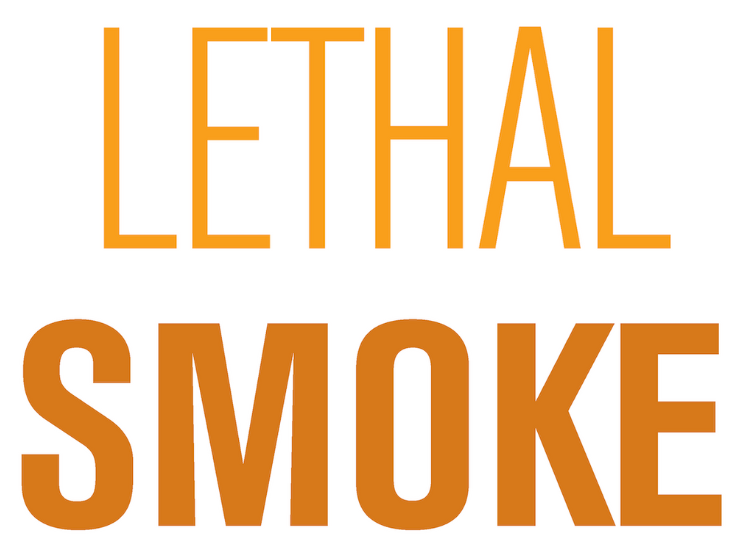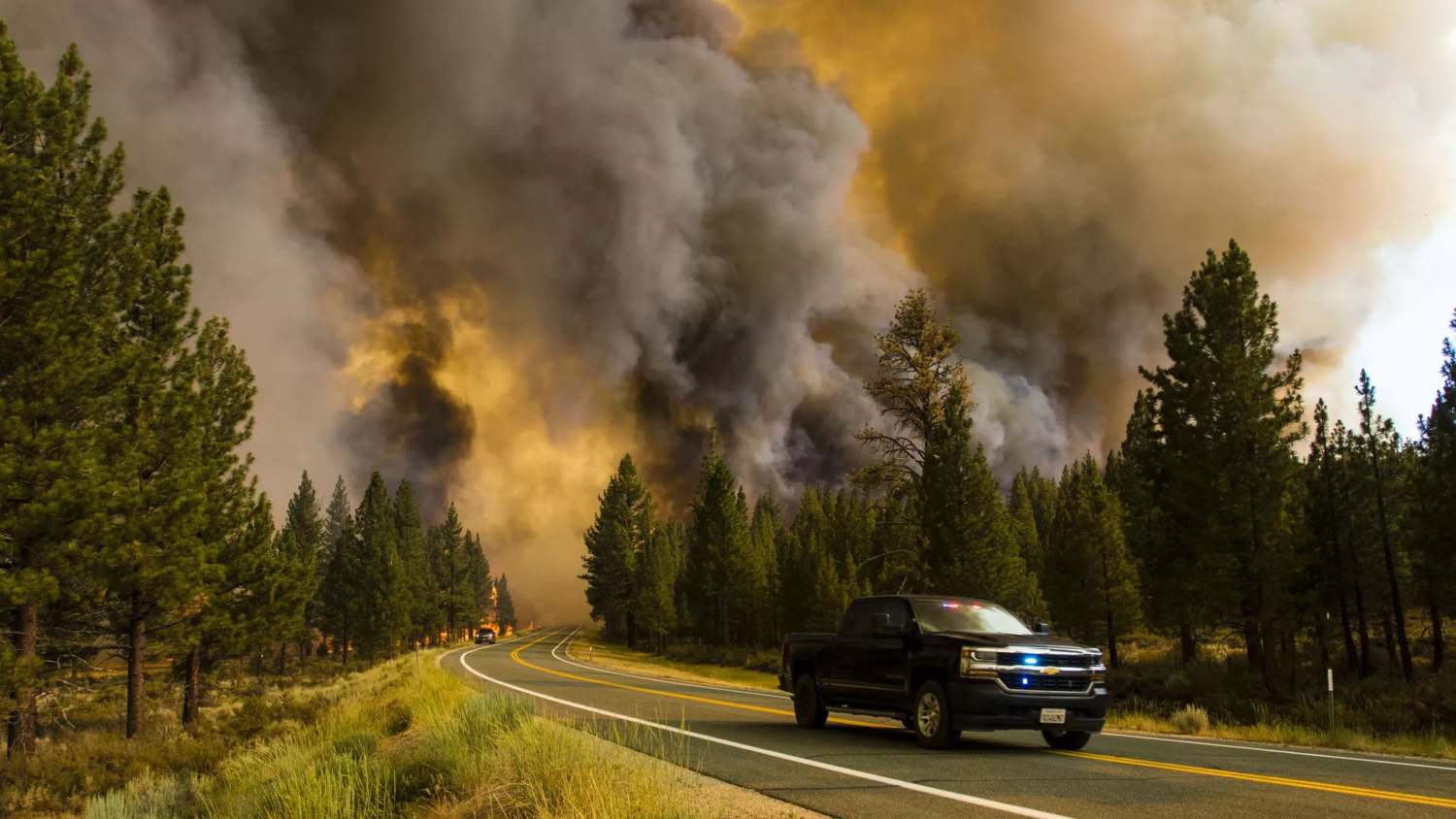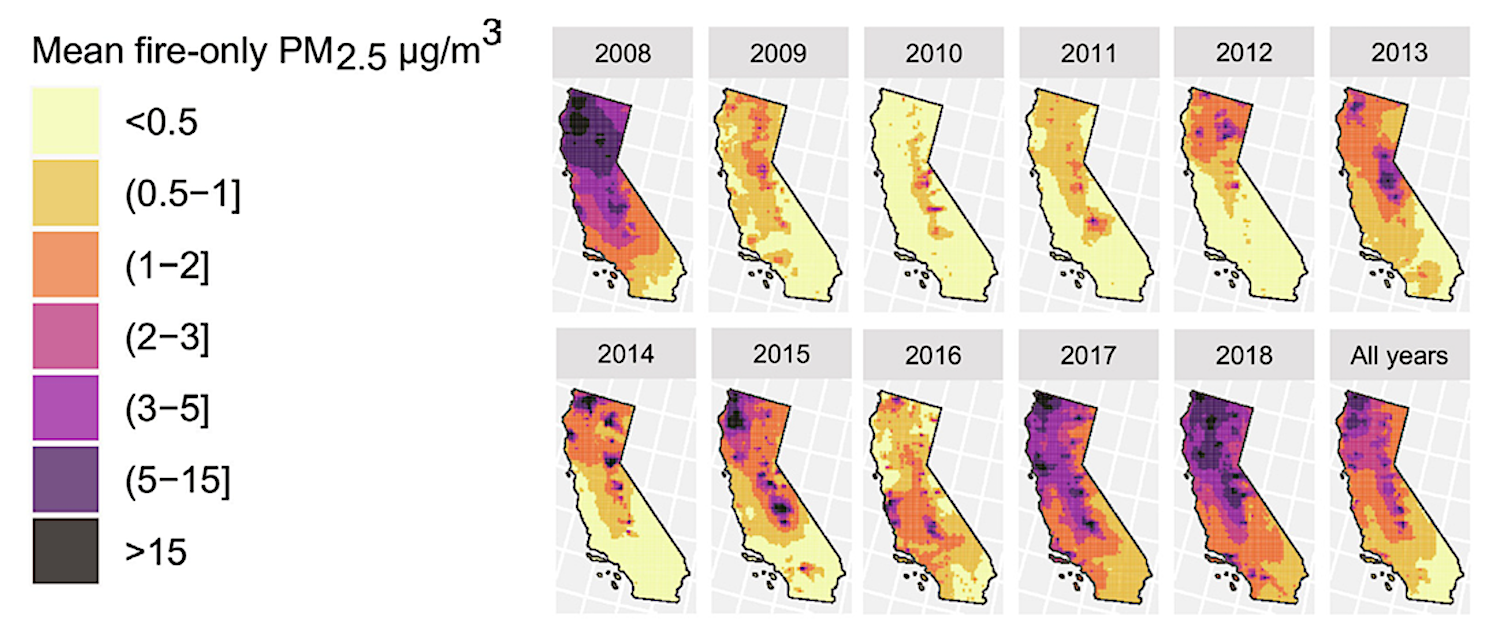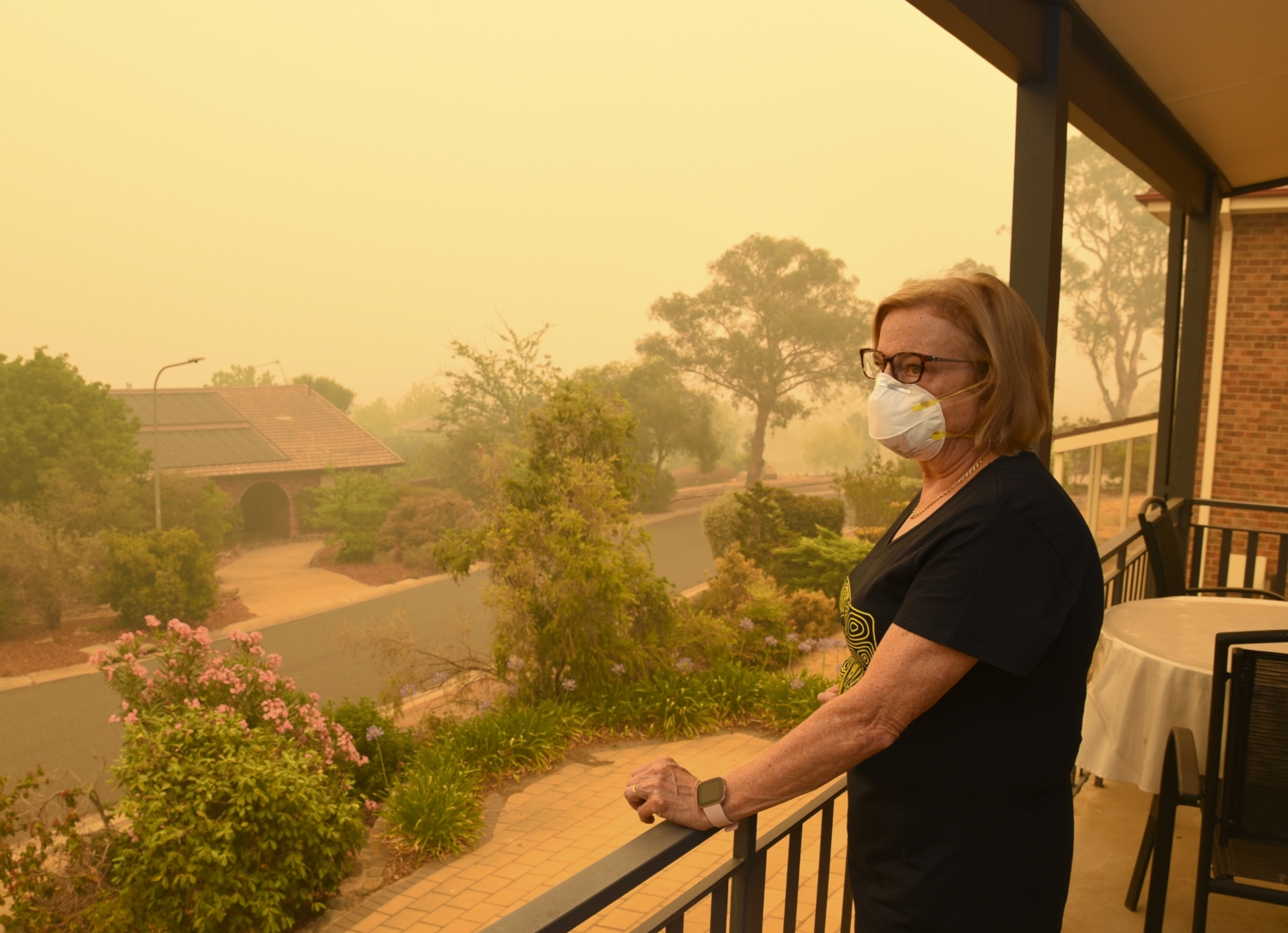

Smoke produced by California wildfires kills far more people than flames do, according to research from UCLA. From 2008 to 2018, more than 52,000 premature deaths have been linked to exposure to the smoke’s toxic particles, says Rachel Connolly of the UCLA Luskin Center for Innovation, lead author of the study published in the journal Science Advances. Connolly conducted the research with senior author Michael Jerrett, an expert in environmental health science at the UCLA Fielding School of Public Health. A look at their findings:

Most California wildfires are in rural, forested areas, but smoke can travel hundreds or even thousands of miles, imperiling large population centers.
Photo: “California Wildfires” by Felton Davis / CC by 2.0

Most California wildfires are in rural, forested areas, but smoke can travel hundreds or even thousands of miles, imperiling large population centers.
Photo: “California Wildfires” by Felton Davis / CC by 2.0
MICROSCOPIC TOXINS
Air pollution from sources including traffic, industry and agriculture is made up of dust, metals, chemicals, mold and more — often measured in PM2.5, or particles smaller than 2.5 micrometers. A growing body of evidence suggests that PM2.5 produced by the chemical stew in wildfire smoke may be more toxic than PM2.5 from other sources. Only a fraction of the width of a human hair, the particles travel deep into the lungs and can enter the bloodstream. Exposure can trigger respiratory distress, harm to the immune system, and exacerbation of chronic diseases including asthma, diabetes and coronary artery disease. The team led by Connolly and Jerrett analyzed Californians’ exposure to PM2.5 in wildfire smoke and estimated the potential toll:




Maps show the average concentration of PM2 attributed to wildfire smoke, measured as micrograms per cubic meter of air.
COMPARING 2010 AND 2018
In years of intense wildfire in California, smoke accounts for a greater percentage of PM2.5 pollution. A comparison of the years 2010 and 2018 illustrates the range:



HOW TO STAY SAFE
On days when wildfire smoke is in the air, these actions can protect your health:
- Stay indoors, keep the windows closed, and turn on an air purifier, if available.
- Wear a mask if you must go outside. An N95 protective mask is best, but a surgical mask will help, too.
- Avoid outdoor exercise, which can draw more pollutants into your lungs. If you exercise indoors, do so in a place with filtered air.
- Stay informed by monitoring government air quality agencies, signing up for alerts when available and checking real-time information on resources such as purpleair.com.
